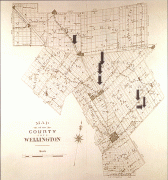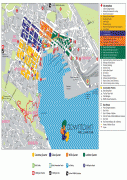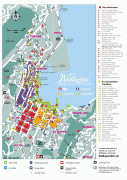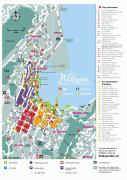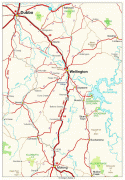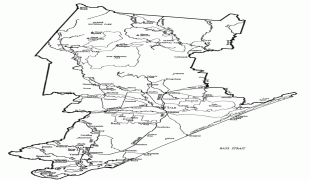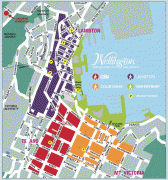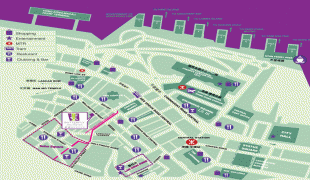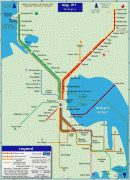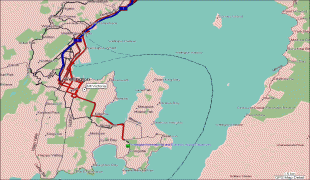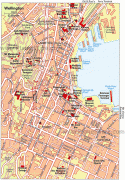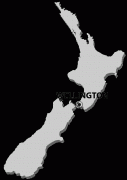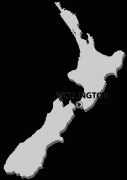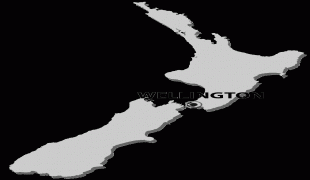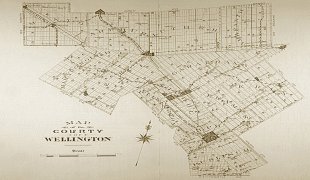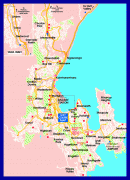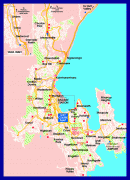Wellington
Legends recount that Kupe discovered and explored the region in about the 10th century, with initial settlement by Māori iwi such as Rangitāne and Muaūpoko. The disruptions of the Musket Wars led to them being overwhelmed by northern iwi such as Te Āti Awa by the early 19th century.
Wellington's current form was originally designed by Captain William Mein Smith, the first Surveyor General for Edward Wakefield's New Zealand Company, in 1840. The Wellington urban area, which only includes urbanised areas within Wellington City, has a population of as of. The wider Wellington metropolitan area, including the cities of Lower Hutt, Porirua and Upper Hutt, has a population of 0 as of. The city has served as New Zealand's capital since 1865, a status that is not defined in legislation, but established by convention; the New Zealand Government and Parliament, the Supreme Court and most of the public service are based in the city.
Wellington's economy is primarily service-based, with an emphasis on finance, business services, government, and the film industry. It is the centre of New Zealand's film and special effects industries, and increasingly a hub for information technology and innovation, with two public research universities. Wellington is one of New Zealand's chief seaports and serves both domestic and international shipping. The city is chiefly served by Wellington International Airport in Rongotai, the country's second-busiest airport. Wellington's transport network includes train and bus lines which reach as far as the Kapiti Coast and the Wairarapa, and ferries connect the city to the South Island.
Often referred to as New Zealand's cultural capital, the culture of Wellington is a diverse and often youth-driven one which has wielded influence across Oceania. One of the world's most liveable cities, the 2021 Global Livability Ranking tied Wellington with Tokyo as fourth in the world. From 2017 to 2018, Deutsche Bank ranked it first in the world for both livability and non-pollution. Cultural precincts such as Cuba Street and Newtown are renowned for creative innovation, "op shops", historic character, and food. Wellington is a leading financial centre in the Asia-Pacific region, being ranked 35th in the world by the Global Financial Centres Index for 2021. The global city has grown from a bustling Māori settlement, to a colonial outpost, and from there to an Australasian capital that has experienced a "remarkable creative resurgence".
Wellington takes its name from Arthur Wellesley, the first Duke of Wellington and victor of the Battle of Waterloo (1815): his title comes from the town of Wellington in the English county of Somerset. It was named in November 1840 by the original settlers of the New Zealand Company on the suggestion of the directors of the same, in recognition of the Duke's strong support for the company's principles of colonisation and his "strenuous and successful defence against its enemies of the measure for colonising South Australia". One of the founders of the settlement, Edward Jerningham Wakefield, reported that the settlers "took up the views of the directors with great cordiality and the new name was at once adopted".
In the Māori language, Wellington has three names. Te Whanganui-a-Tara refers to Wellington Harbour and means "the great harbour of Tara". Another is Pōneke, commonly held to be a phonetic Māori transliteration of "Port Nick", short for "Port Nicholson". An alternative possible etymology for Pōneke comes from a shortening of the phrase Pō Nekeneke, meaning "the journey into the night", referring to the exodus of Te Āti Awa after they were displaced from the Wellington area by the first Europeans. The city's central marae, the community supporting it and its kapa haka group have the pseudo-tribal name of Ngāti Pōneke. Te Upoko-o-te-Ika-a-Māui is another, meaning 'The Head of the Fish of Māui' (often shortened to Te Upoko-o-te-Ika), a traditional name for the southernmost part of the North Island, deriving from the legend of the fishing up of the island by the demi-god Māui. The legendary Māori explorer Kupe, a chief from Hawaiki (the homeland of Polynesian explorers, of unconfirmed geographical location, not to be confused with Hawaii), was said to have stayed in the harbour prior to 1000 CE. Here, it is said he had a notable impact on the area, with local mythology stating he named the two islands in the harbour after his daughters, Matiu (Somes Island), and Mākaro (Ward Island). However, the primary settlement of Wellington is said to have been executed by Tara, the son of Whatonga, a chief from the Māhia Peninsula, who told his son to travel south, to find more fertile lands to settle.
In New Zealand Sign Language, the name is signed by raising the index, middle and ring fingers of one hand, palm forward, to form a "W", and shaking it slightly from side to side twice.
The city's location close to the mouth of the narrow Cook Strait leaves it vulnerable to strong gales, leading to the nickname of "Windy Wellington".
Map - Wellington
Map
Country - New_Zealand
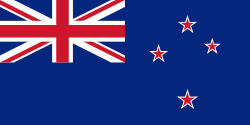 |
 |
| Flag of New Zealand | |
The islands of New Zealand were the last large habitable land to be settled by humans. Between about 1280 and 1350, Polynesians began to settle in the islands and then developed a distinctive Māori culture. In 1642, the Dutch explorer Abel Tasman became the first European to sight and record New Zealand. In 1840, representatives of the United Kingdom and Māori chiefs signed the Treaty of Waitangi, which in its English version declared British sovereignty over the islands. In 1841, New Zealand became a colony within the British Empire. Subsequently, a series of conflicts between the colonial government and Māori tribes resulted in the alienation and confiscation of large amounts of Māori land. New Zealand became a dominion in 1907; it gained full statutory independence in 1947, retaining the monarch as head of state. Today, the majority of New Zealand's population of 5.1 million is of European descent; the indigenous Māori are the largest minority, followed by Asians and Pacific Islanders. Reflecting this, New Zealand's culture is mainly derived from Māori and early British settlers, with recent broadening of culture arising from increased immigration. The official languages are English, Māori, and New Zealand Sign Language, with the local dialect of English being dominant.
Currency / Language
| ISO | Currency | Symbol | Significant figures |
|---|---|---|---|
| NZD | New Zealand dollar | $ | 2 |
| ISO | Language |
|---|---|
| EN | English language |






